Today’s episode will be about Juan Perón and his complicated legacy!
Against all odds, Donald Trump succeeded in challenging political elites during the presidential campaign. He had not yet won the election, but commentators already struggled to find historical examples to explain the appeal of his vociferous movement. On 11 August, the Financial Times ran an article titled: “Donald Trump Evokes Latin America’s Old Style Strongmen.” The article was illustrated with cartoons of Trump, Venezuelan leader Hugo Chávez, and, yes, Perón. Many followed. “Is Donald Trump a Peronist?” “It’s What Perón Sounded Like.” This time, analysts’ emphasis was not only placed on government intervention in the economy, but on the supposed political irrationality of the lower classes: under economic duress, blue-collar workers—allegedly unlike bankers or dentists—are prone to support demagogues who trick them into believing that there are easy shortcuts to their daily hardships
Where did those images associated with Perón come from? How did they arrive in the United States in 2009 or 2016? Many of them were born in the mid-1940s in remote places like León Segovia’s house in the Chaco territory, a region in northern Argentina, eight hundred miles from Buenos Aires. On 9 December 1946, Segovia received a letter with a presidential seal and the signature of President Juan Perón. Segovia was a welder at Las Palmas, a sugar mill that belonged to an Irish couple until a traditional Argentine family bought both it and the entire town. Housing, food, drink, currency—everything was provided by the mill. Of criollo descent and indigenous features, Segovia did not even use the official Spanish language at home.4 Although fluent in Spanish, he spoke mostly Guaraní—a language spoken by native inhabitants of the Chaco Forest—with his parents and friends. Three aspects of Segovia’s life were deeply entangled with the larger national community: he was a member of his union, he had had run-ins with the National Gendarmerie, and he had voted for Colonel Juan Perón in the presidential elections. His decision to vote for Perón seemed an unlikely one, given that his socialist union had supported the republic in the Spanish Civil War and the Allies in World War II, while Perón was a nationalist who revered Spanish Falangism and belonged to a group of officers with Nazi sympathies.
In the official letter, President Perón notified Segovia that he had been selected as a student in the training course for diplomatic worker attachés.5 It was a new position within the Argentine foreign service that Perón created a few weeks after taking office. Along with Segovia, approximately one hundred rank-and-file union members received similar letters. The General Confederation of Labor (cgt) had selected its most valued activists to represent Argentina abroad. A few months later, leaving the country for the first time in their lives, Segovia and forty other labor activists traveled to embassies worldwide with the mission of spreading Perón’s gospel of social revolution. Originating from the small towns of the countryside and the crowded working-class suburbs of Buenos Aires, the attachés were stationed in Washington, São Paulo, Moscow, Bogotá, and Paris, “as [Perón’s] personal representatives beyond the national borders.” Over the following decade, five hundred labor activists became members of the Argentine foreign service. Self-described as Perón’s proud foot soldiers, they represent the largest presence of blue-collar workers in the foreign service of any country in history
Once abroad, the attachés wielded their own diplomatic position as proof of the swift changes occurring in Argentina under Perón. Nowhere else had workers accomplished so much, reaching positions in a realm usually reserved for elites. As part of their mission, they described the Argentine reality: hundreds of factories—many of them state-owned—were producing everything from steel to canned food. Unions held unprecedented bargaining power. They managed hotels for their workers at the most scenic vacation resorts. And hospitals and schools were free to all. The attachés showed that the daily caloric intake of an Argentine worker was among the highest in the world. And they emphatically attributed these advances to Perón and his wife, Eva Perón. In diplomatic dispatches, personal letters, and news articles, they reported back to Argentina about a European continent ravaged by the war. From Latin America, they described with ethnographic precision the meager wages of workers at an oil refinery in Peru and the kilometers that Guatemalan peasants at a plantation had to walk between their shacks and the first source of running water. From the United States, they chronicled layoffs at telephone companies, the end of rent regulation, which had benefited low-income workers during the New Deal, and the massive strikes in the automaker sector. The attachés made sure that the setbacks of unions and the efforts of the business sector to reverse workers’ gains in the United States were widely publicized in Argentina and the rest of Latin America.
The attachés joined the democratic spring that swept Latin America after 1945. The contrast in the achievements of organized labor at home and the difficulties of workers abroad reinforced their belief in the exceptionality of the Peronist recipe. And this, in turn, provided a class ethos to a long-standing sense of predestination and to ambitions for regional leadership that ran deep in Argentine nationalism. They promoted Peronism as a path for the expansion of social citizenship for the emerging working class and denounced U.S. foreign policy as an ally of local elites in obstructing that mission. With this basic toolkit of ideas, they allied with the leftist leader Jorge Eliécer Gaitán in 1948 in Colombia and made sure that indigenous people in Peru had a copy of Perón’s Declaration of the Rights of Workers, which had been translated into Quechua by 1950.
They funded an early venture abroad of a young Cuban law student, Fidel Castro, and befriended an equally young Argentine doctor, Ernesto Guevara. In 1954, a Peronist attaché sheltered members of the future leadership of the Guatemalan guerrilla in the Argentine embassy during the cia-backed military coup. The attachés confronted U.S. labor diplomats of the American Federation of Labor and Congress of Industrial Organizations (afl-cio), who had deployed representatives throughout the world since the end of World War II.
Particularly in Latin America, they had worked closely with the U.S. government, the State Department, the Central Intelligence Agency (CIA), and the business sector. Labor diplomats became part of the larger U.S. efforts to contain communism by gaining the support of workers in the region for the strengthening of liberal democracy. The U.S. labor diplomats saw Peronism as a fascist threat and worked with U.S. officials in containing Perón’s transnational aims. They shared with Peronism the idea that inequality was a major problem in Latin America. They also argued that democracy could not be achieved without social reform. But they claimed that workers should gain their rights without violent upheavals of social order, which could be used by demagogues (i.e., Perón) to create a totalitarian government that would curtail citizens’ freedoms. The Peronist specter captured the concerns of officials and elites in the Americas.
By 1946, Argentina was already mentioned as one of the main threats to democratic liberalism in the document that became the blueprint for Cold War containment. And two years later, a U.S. official stationed in Europe reflected, “The threat which gives us the worst case of cold shivers is that of a southern bloc dominated by Argentina.” Attachés like Segovia came to represent this menace to the extent that their actions were eventually described by Robert Alexander, the scholar with the greatest influence on U.S. officials working with organized labor in Latin America, as part of “the whole Peronista propaganda apparatus . . . against the United States [that] outdid even that of the Communists.” By the onset of the Cold War, the image of Peronism as a symbol of social change gone awry was engraved in such a powerful way that it survived the Cold War itself.
Excerpt from Ambassadors of the Working Class, by Ernesto Seaman
You can find out more about Ernesto by visiting his twitter page

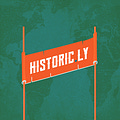




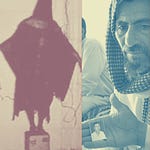
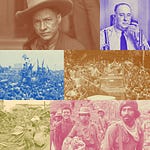
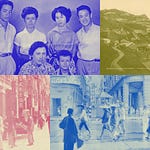
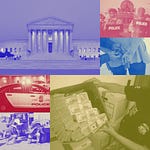
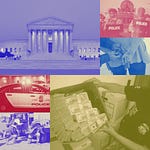
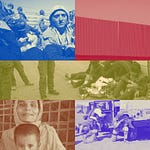


The Legacy of Juan Perón with Ernesto Semán